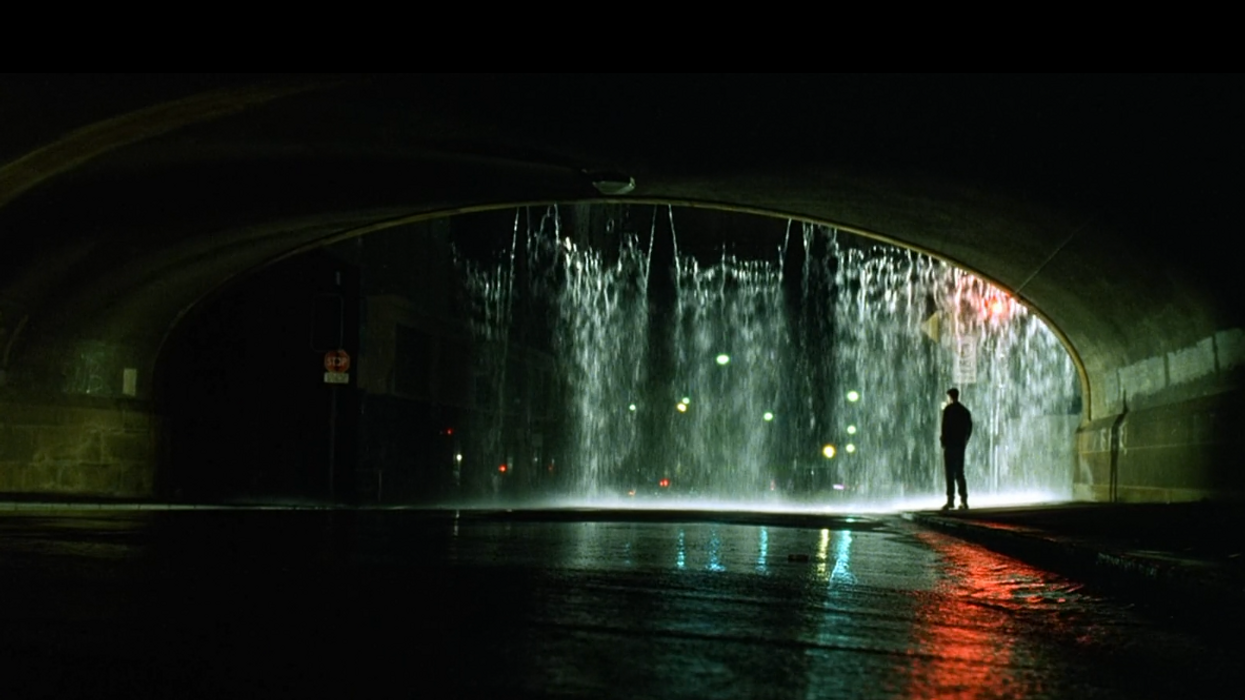This Is Every DPs Secret Weapon (and It's Super Cheap and Cinematic)
If you're not using it on your own projects right now, you should be.

When you think about a cinematographer's toolkit, what kinds of things come to mind? A camera, lenses, lights, modifiers, gels, and stabilizers are obvious, right? And not only are they obvious, but they're also often very expensive.
I'm thinking of something that is less obvious, at least to beginners, and a whole hell of a lot cheaper.
I'm talking water.
No, this isn't a lesson on hydration, though that is also important (please stay hydrated on set), it's a lesson on how water can make your films more cinematic.
In this video, Indy Mogul's Ted Sim talks with Phil Rhodes of American Cinematographer about how filmmakers can utilize the wet stuff to establish tone, make their lighting pop, and make their compositions generally more badass. Check it out below:
If you asked me at the beginning of my filmmaking journey what water could be used for in a film, I would've said what most newbies probably say, "Uh, for rain...or like...a flood...or like...a fake ocean scene like in Titanic." And you know what, I would've been super psyched that I knew James Cameron filmed those scenes in a studio rather than the actual Atlantic Ocean. "I'm going far in this business," I would've thought to myself. But Present Day Me would gently put her hand on Past Me's shoulder and said, "Water is so much more powerful, young one. And also, knowing film trivia doesn't translate to knowing shit about actual filmmaking."
So, let's get into how professional DPs use water on set.
- Wetdowns: Throwing a bunch of water on the ground ("wetdown") does something that is really cool and really helpful...it creates contrast. DPs do this, especially on streets, to capture reflections of light, which breaks up the darkness of the asphalt at night, or to darken the cement during the day, which is notorious for being overexposed. Wetdowns are also great at creating texture.
- Reflections: Water can also be used to create reflections, whether they're headlights on a roadway or your subject's face as they get all introspective staring at themselves in a pool. You'll see this technique a lot during nighttime car scenes, with raindrops trickling down the windows and windshields.
- Steam: Ahhhh...the gaseous state of water. It's a marvelous vehicle with which to create atmosphere, spread and diffuse light, and add depth to a composition. Yeah, you can use fog or haze to do all of that, but those linger in the air for a long time and some shooting situations might call for something that dissipates quickly, in which case you'd use steam. So, get yourself a wallpaper stripper and get to it! (Quick tip: Steam works better in cold weather.)
So, go grab a hose, some buckets, and one of those handy dandy wallpaper strippers and utilize this super cheap and accessible cinematographic tool. You'll soon realize that water can be just as necessary to a shoot as the other equipment in your toolkit.
If you want to hear Ted and Phil's entire discussion, check out Indy Mogul's podcast in full.
Source: Indy Mogul












